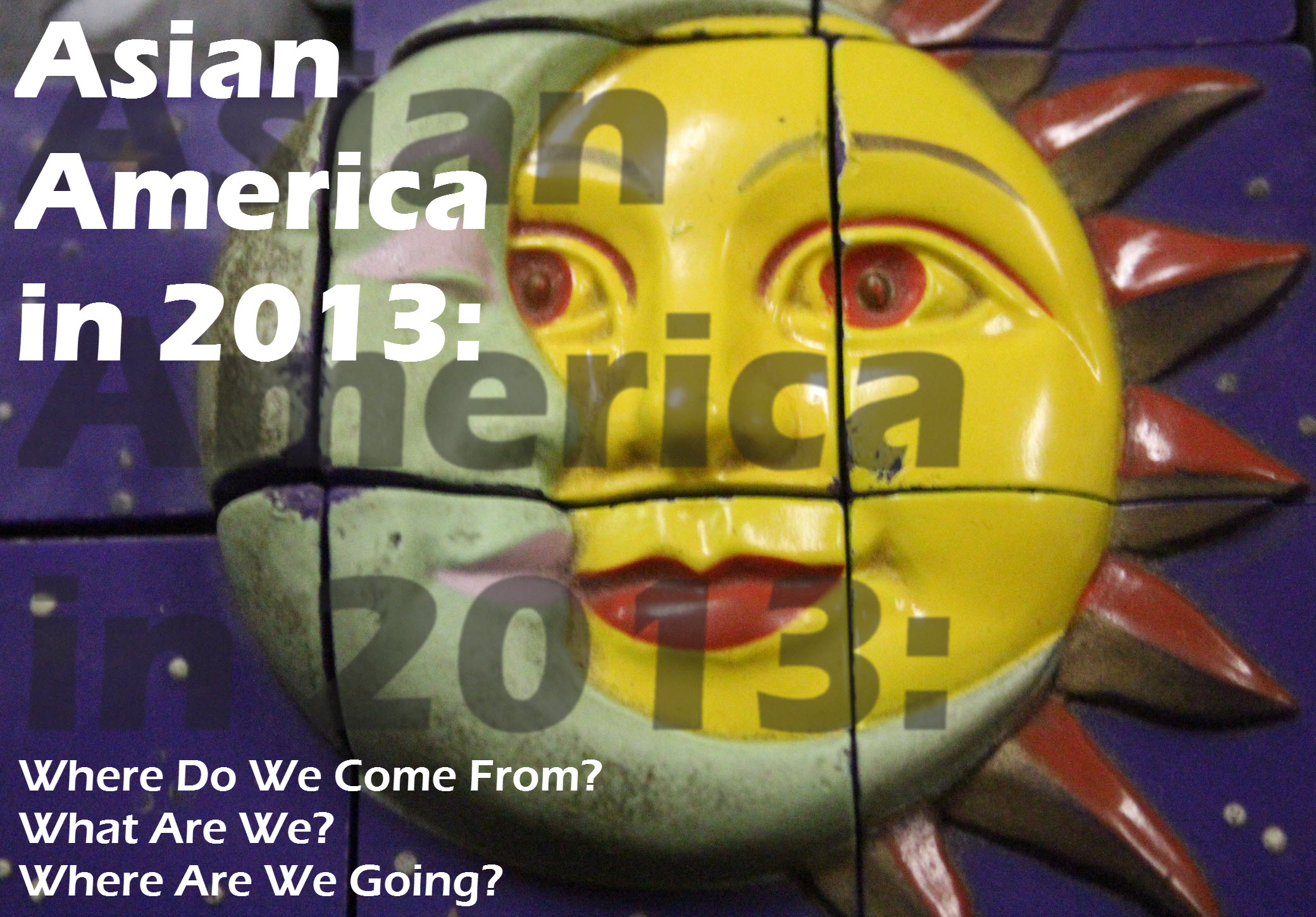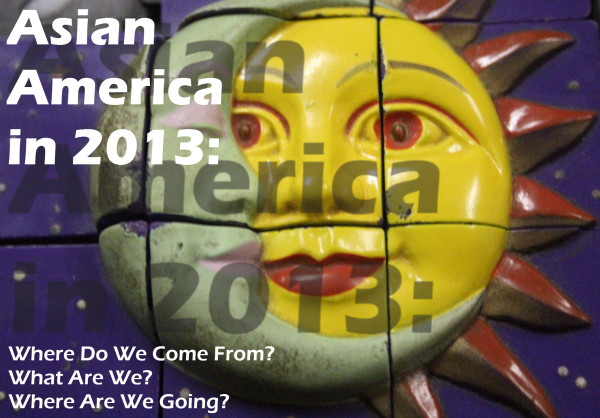[pullquote]America is the only nation in the world that is founded on a creed. That creed is set forth in the Declaration of Independence; perhaps the only piece of practical politics that is also great literature. ― G.K. Chesterton[/pullquote]
As a global nomad, I often wonder what part of me is truly Asian-American. I am Asian, yes, and I am also an American citizen by birthright. I have lived in the West Coast, the East Coast, the Midwest; I have lived in eight Asian countries, and through these experiences, I ask this question as both an outsider, one who does not “belong” to Asian America, and an insider, for the basic characteristics of (one part of my identity) being my American citizenship and Asian ethnicity (Chinese and Filipino).
This is relevant for the present age we live in, as the forces of globalization compel migration around the world, including people seeking the American Dream by leaving America for Asia to keep the dream alive.
If an outsider were to ask what defines Asian America, much of our literature and our online voices seem to reveal several characteristics. The first characteristic is that there is a struggle to be seen as no different than other Americans of Anglo ancestry, to not be considered foreigners and discriminated in their own land by them solely on the basis of race. Most of the news in Asian America is about visibility in the mainstream media, or highlighting acts of racism.
The second characteristic seems to contradict the first: the initiative to assert their differences and uniqueness from the rest of America, a paradox where people want to be “normal” but strive to be extraordinary as well.
The third characteristic is a further extrapolation that on paper, strives for inclusiveness within the community, bringing in South Asians, Southeast Asians, East Asians, and Pacific Islanders under one large banner of “Asian America” despite their ethnic and cultural heritages all being distinctively different. But in practice, the pan-Asian boundaries still excludes people with arbitrary arguments about what constitutes “being Asian” such as saying “Filipinos aren’t Asian, they aren’t connected to the main continent” [and neither is Japan or Taiwan and several other countries]; or “Indians aren’t Asian, they are nothing like Chinese and East Asian cultures” [effectively dismissing anything not Chinese, Japanese, Korean, or Taiwanese as not Asian].
This is where the questions we should be asking begin: how much is Asian America’s culture and identity defined by race alone, precisely because of that exclusiveness that exists within their collective? How much can Asian America speak for and represent Asia and Asians, if their culture is American and their ethnicity just happens to be Asian?
[pullquote]‘Live by the foma (harmless untruths) that make you brave and kind and healthy and happy.’ All of the true things that I am about to tell you are shameless lies. Anyone unable to understand how a useful religion can be founded on lies will not understand this book either. So be it. ― Kurt Vonnegut, Cat’s Cradle[/pullquote]
Kurt Vonnegut introduced two very important concepts in his classic Cat’s Cradle: the first is karass, the second is granfalloon. The former refers to “a group of people who, often unknowingly, are working together to do God’s will”, and the latter being “a group of people who outwardly choose or claim to have a shared identity or purpose, but whose mutual association is actually a proud and meaningless one.”
Applying this to Asian America, the karass here is that we are trying to group ourselves by ethnicity (ethnicities actually) and act like a cultural group, but cultural groups are not defined solely by race, especially due to the diversity of cultures in Asian America, even from within the same country of ancestral heritage (India and its multiple states; Southeast Asia and many cultures, histories, and languages within each country, such as the Champa and Hmong, whose presence is separate from the ethnic majority in their respective lands).
We are, essentially, struggling to group ourselves as a community based on race, but as a cultural group, we also separate ourselves from one another within the community based on “Who is and who isn’t Asian?” kinds of questions, essentially making Asian America not a community, but a granfalloon.
[pullquote]One of the saddest lessons of history is this: If we’ve been bamboozled long enough, we tend to reject any evidence of the bamboozle. We’re no longer interested in finding out the truth. The bamboozle has captured us. It is simply too painful to acknowledge―even to ourselves―that we’ve been so credulous. (So the old bamboozles tend to persist as the new bamboozles rise.)
― Carl Sagan, Cosmos[/pullquote]
The next question we should be asking is this: what is our purpose and our culture? What ideas and values and goals do we have to define us?
One obvious answer is America itself. Part of what binds people together is an agreement of American values and laws, as spelled out and protected in the Bill of Rights, and instigated by the Declaration of Independence. These include liberty and individuality, hallmarks of the American “Can do!” attitude. But given this characteristic, someone who is not an American citizen is someone who belongs to America for his values and his struggle to be American, with the rights and privileges of one, Jose Antonio Vargas, who came out as an illegal immigrant in 2011. If he were any less American because of his lack of citizenship, then that faulty reasoning dismisses the others who have yet to become citizens or are unable to become citizens, regardless of their values.
And if America prides itself on diversity of opinions and freedom of expression, what makes a dissenting American any less American? I’ve been called out to stop writing multiple times because I am “not really American for growing up overseas”, that “my passport means nothing”, that “I am ignorant and wrong because my analyses and conclusions are not the same as the average Asian American”, and have been accused of hating America and Asian America for my opinions. Actually, I love America and Asian America; that’s precisely why I’m most critical, for I believe we could be better than we currently are.
Where we currently are is a place for plenty of opportunities to step back and see the potential, and the responsibility that goes with that: opening ourselves up to new definitions, new identities, and new dreams that are a result of this trans-Pacific frame of mind. Especially due to Web 2.0 with new media and social media, the social landscape is growing, and we move towards a type of homogenization unseen before, without the restraints and filters of mainstream media, publishing, and entertainment. Because of this, it is time we go beyond thinking about “me, me, me” and towards “we, we, we”–characteristics of a vibrant and supportive community that we have the potential to really be instead of piggybacking off of the collective granfalloon for our individual gain.
End of Part 1
- Coming up tomorrow: Asian America in 2013: Where Do We Come From? What Are We? Where Are We Going? Part 2: The Red King Syndrome
Contributors: Johnny C and Jocelyn “Joz” Wang.
Photograph by Johnny C. Layout and graphic design by Jocelyn “Joz” Wang.









